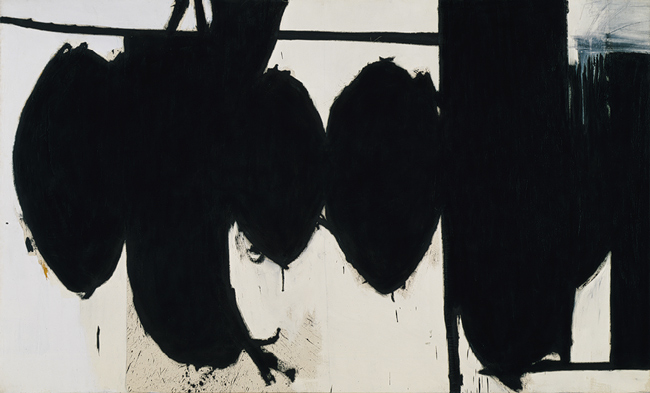Co-Written by Nuala Clarke and Patrick Groneman
“Painting is a medium in
which the mind can actualize itself; it is a medium of thought…Painting
is…the mind realizing itself in color and space.” – Robert Motherwell
On Friday May 1st,
the ID Project Arts Group went to the Metropolitan Museum of Art to visit one
of Robert Motherwell’s paintings from his series of “Elegies to the Spanish
Republic”. He made over one hundred and seventy of these paintings which
were a lament for the people and the culture that died in the Spanish
Civil War. Motherwell, who was only 21 at the time the Civil War broke out was
struck by the realization “that the world could, after all, regress.”

We learned that he was using a process known as Automatism when he created these paintings. This is a method of painting in which an artist allows the impulses of the unconscious to guide the hand in matters of line, color, and structure without the interference of conscious choice. This method provides the means of getting to the innermost, or pre-conscious self, which is what Chogyam Trungpa Rinpoche calls “Alaya”, the store consciousness. “It is the fundamental state of consciousness..the basic ground where things are processed”. (Training the Mind. p.11.) The act of painting becomes a meditative process where the hand delivers a visualization of the mind. Motherwell said “If the medium is exactly right my hand just flies and I do not even have to think, my hand just does it, as though I am not there” (from “The Third Mind” Catalogue).
We saw that in repeatedly exploring the subject of death, it is as if Motherwell visits the charnel ground over and over again. It is not out of desire for political justice that he mourns for those who died, but for the sake of bearing witness, of existing with the truth of relative life and death. If we view the painting narratively we could interpret the repeated dash and egg shapes from his “Elegies” as representing life and death, of coming into and out of existence. But if viewed in a single instant, the non-dual nature of the black and white forms becomes apparent. This, for us relates to the teachings of the Buddha in the Heart Sutra, “Form is emptiness, emptiness is form.”
Patrick: One of the things that stood out for me in the Elegy is how Motherwell’s struggle is so visible in the brushstrokes. This really gave me a window into his process, and if wakefulness is presence in process, then being present with his process is being present with his wakefulness. In the choice of shapes I felt his use of powerful archetypes like the egg and the dash shapes provided an interface through which I was able to share his contemplation of birth and death, duality and non-duality. This painting became for me a map through my own emotions and subconscious, and pointed me in the direction of my own wakefulness. This painting becomes a generous sharing of the most intimate exploration someone can have.
“There are three types of generosity…the second one is the gift of fearlessness. You reassure others and teach them that they don’t have to feel completely tormented and freaked out about their existence ” – Chogyam Trungpa Rinpoche from “Training the Mind.”
Nuala: I was moved by the experience of spending time with the painting. Thich Nhat Hanh says “A bell is a bodhisattiva, it helps us wake up.” This painting rang a visual bell for me last week. I had been standing close to it, knowing the story, seeing the paint, the brushstrokes, the corrections and texture, feeling to a certain extent the blackness and lightness. When I stood back from it though It shone, the image came alive and the painting seemed very present. I didn’t want to leave it. I kept looking back at it. It had caught my attention and held it. I now have absolute affection for it and I’ll visit it every time I go to the Met. What an amazing thing for someone to have done, to have made something durable that could cause wakefulness.
“The absolute which lies in the background of all my activities of relating seems to retreat as I get on its track; yet the relative cannot exist without some point of support. However, the closer one gets to the absolute, the more mercilessly all the weaknesses of my work are revealed.” – Robert Motherwell
